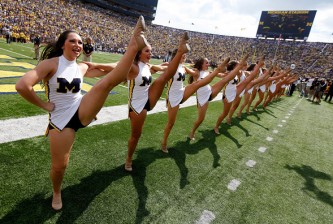Thanks for continuing to read the guest columns. Today, Jason Chalifour writes about the cable TV networks gouging viewers with their subscriber fees and how we need to take back control of the set.
Sporting broadcasters face several challenges in the medium to long term created by the changing way consumers view content. These challenges are all interrelated; leagues and their broadcast partners will have to evolve with this changing landscape to confront these changes.
- Ever increasing rights fees paid by broadcasters for sports content in search for DVR-proof programming that viewers still watch live.
- Ever increasing fees charged by broadcasters to cable and satellite companies and these fees being passed onto consumers in the form of higher monthly bills.
- “Cable cutters” who eschew paid television service for web-based streaming content like Netflix and Hulu along with terrestrial TV broadcasts.
As broadcasters pay more and more in rights fees they are increasingly seeking to pass these rights fees onto content providers. Providers are stuck between a rock and a hard place. A large percentage of customers demand sports programming, enabling broadcasters to almost name their price. MSG Network was involved in a bitter dispute with Time Warner Cable or just this issue.
The pendulum also swings the in the other direction as Mid Atlantic Sports Network is also involved in litigation with Time Warner Cable over network distribution in North Carolina. Despite the fact that the area is several hours away from Washington DC and Baltimore, the area is part of the Nationals’ and Orioles’ broadcast territories and both clubs are eager to get the additional fees from the additional subscribers. Time Warner does not want to have to pass on those fees to their customers when their customers aren’t overly interested in the product in the first place.
In the 1990’s by having state and local governments pay for stadia, teams were able to have non-sports fans cover the construction costs. Under the current pay TV model, non-sports fans are paying for the costs of national and regional sports networks in their basic packages. On average $4.69 of every cable bill is just for ESPN. My mom has ESPN as part of her cable package and has no idea what number the channel is. Either way she is still paying almost $5.00 a month.
These fees are causing consumers’ bills to go up and up. This is at a time when consumers have more options than ever. Digital TV broadcasts give people clear, HD content for free; all they need is an antenna. If offerings on terrestrial TV are wanting at a particular time, consumers can stream endless hours of online content. Interestingly it is easier for sports fans to stream out of market games online than it is to see their home team. Major League Baseball in particular with their arcane blackout rules is loathe to undermine the cash cow that is cable TV.
It is getting to the point where something has to give. Content providers are being squeezed on both sides. Sports networks are demanding more and more fees, while these increasing fees are causing customers to drop traditional pay TV service. As the number of subscribers falls, the networks are losing those rights fees. Sports fans who want to watch their team can’t ditch their cable or satellite provider if they want to see their favorite team legally without scavenging for illegal streams. The only winners are the teams and leagues.
The current pay TV model is broken. A fairer and more sustainable solution would be a model where consumers have greater control to pay for the content they actually want. When a person can go to the Channel Store on their streaming player and buy only the channels they want, cable providers can’t compete by making consumers pay for channels that they don’t want.
If consumers’ cable and satellite bills get out of hand the federal government or regulators will get involved. When it costs a baseball fan as much to watch their home team for a month as it does the rest of the league for an entire season something is wrong. There is already a class-action lawsuit over MLB’s blackout rules. While the courts are unlikely to overturn baseball’s anti-trust exemption, congress can should it choose to.
What has become increasingly clear is that the way things are now and the way they have been is not the way of the future. The sooner leagues, broadcasters, and content providers confront these challenges the better off they will all be; all three groups need each other. With any luck consumers will come out ahead as well.
Jason Chalifour (@JChalifour) is the founder of the website http://www.98ontheblack.com. Born and bred New Englander, Jason’s passions are baseball, soccer, football, basketball, hockey, and all sports really. He is a Sport Management grad that follows sports media, law, and the business of sport. Jason is also an Aston Villa supporter and columnist for http://www.astonvillalife.com
Thanks to Jason for the column. More content is on the way later.






















